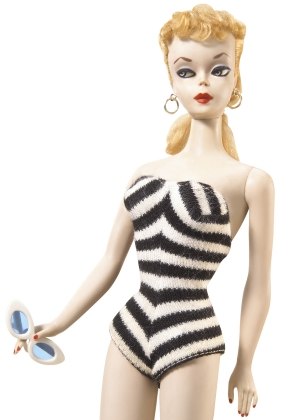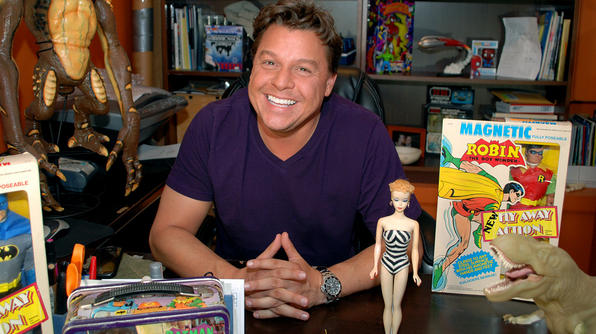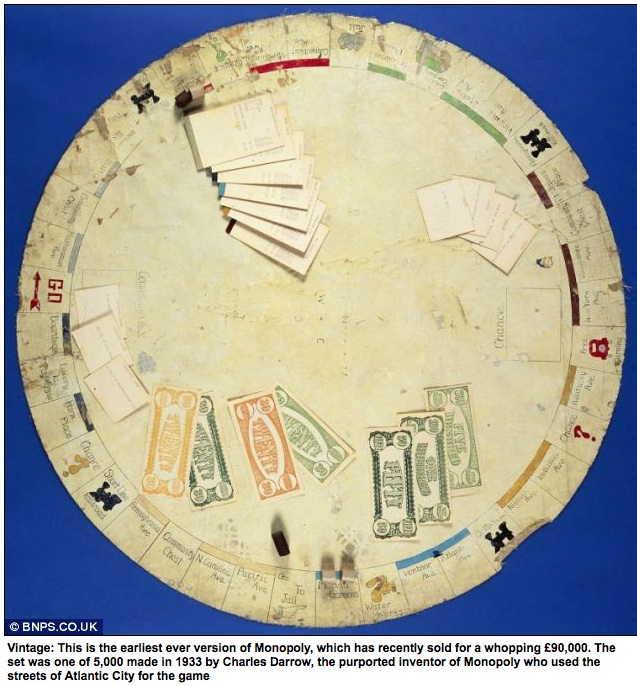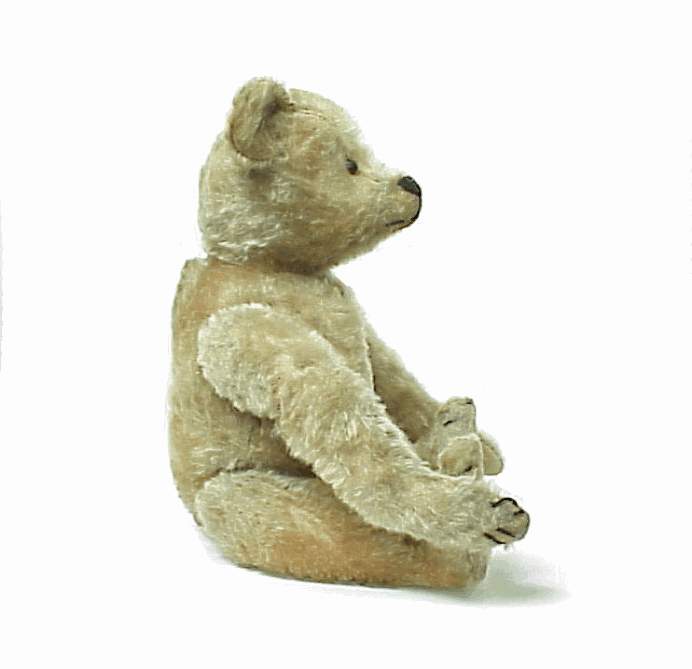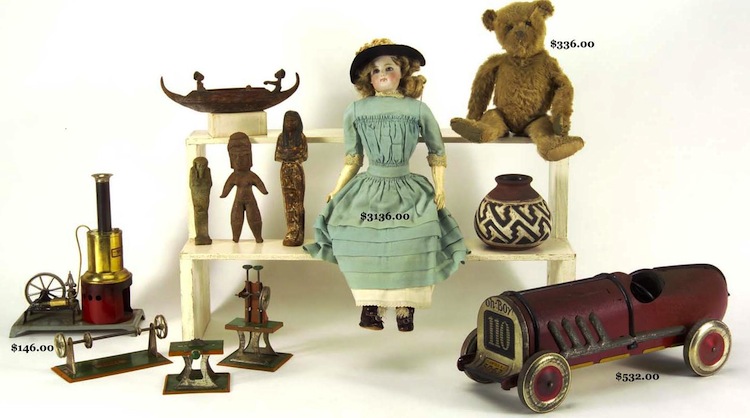Barbie doll is one of the most popular dolls in the world. The first Barbie doll introduced by Mattel, Inc. in 1959. These dolls are produced in Japan, their clothes are handmade and stitched with great detail. This very popular doll for girls, some of these dolls are very unique and became the costliest Barbie doll. Creator, American businesswoman Ruth Handler based them on a German doll called Bild Lilli. Since then, of course, Barbie doll has become a very popular toy. Some of the costliest Barbie doll is sold at very high prices. Barbie has gone through several editions, Barbie no 1 has become the costliest Barbie.
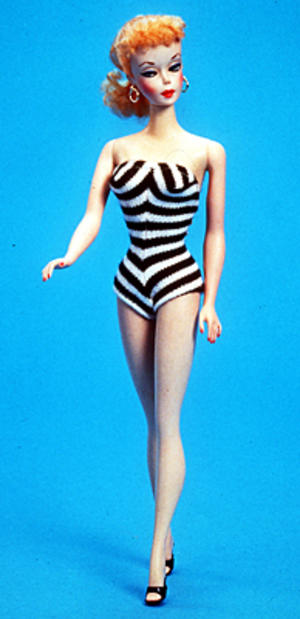 Most expensive Barbie goes to auction
Most expensive Barbie goes to auction
She’s be the most expensive doll in Barbie’s 51-year history.
Ms. Handler was inspired by watching her daughter Barbara play with paper dolls.
The first Barbie featured a black and white zebra-striped bathing suit, a ponytail, and hoop earrings. She sold for just $3.00 at the American Toy Fair in New York City in 1959. These “first edition”
Barbies are now worth up to $8,000.
What to look for:
Hair: Blonde or brunette ponytail with curled bangs
Eyes: White irises in her eyes, she is looking sideways, and has very pointy eyebrows
Clothes: Black and white zebra striped 1-piece swimming suit. White sunglasses with blue lenses. Black open-toed high heel shoes.
Jewelry: Gold hoop earrings
Body: Partially solid with metal tubes in her legs. She has matching metal holes in the bottoms of her feet to fit on a doll stand.
Other markings: Right side buttock, Barbie ™ (not Barbie ®), may have other small markings on back and inner arms and thighs from production. Her right foot is marked “Japan”.
The doll will normally have a ‘ghost white’ appearance as the skin tone will have bleached. if you pull down the swimsuit the real skin tone should be seen with a definite contrast to the bleached plastic.
It is difficult to find a first edition vintage Barbie doll to purchase. Most collectors who own them have no intentions of giving them up. There are ways to find them, but it may take a lot of research. You can always keep an eye on auctions sites such as eBay, but more than likely you will find the vintage Barbie doll in the best condition at a collectibles shop, or a vintage doll fair.
Once you have found your Barbie, make sure that you look her over carefully for the specific markings and body styles mentioned above. Unfortunately, it’s easy to be “taken” by others when you don’t know what to look for. If at all in doubt, ask the owner if you can take pictures of her, and then have them evaluated by a doll expert before you purchase. If they have nothing to hide, they won’t have a problem with this request.
It’s always best to get an expert opinion before you hand over thousands of dollars for your newly found treasure.
History
Ruth Handler watched her daughter Barbara play with paper dolls, and noticed that she often enjoyed giving them adult roles. At the time, most children’s toy dolls were representations of infants. Realizing that there could be a gap in the market, Handler suggested the idea of an adult-bodied doll to her husband Elliot, a co-founder of the Mattel toy company. He was unenthusiastic about the idea, as were Mattel’s directors.
During a trip to Europe in 1956 with her children Barbara and Kenneth, Ruth Handler came across a German toy doll called Bild Lilli. The adult-figured doll was exactly what Handler had in mind, so she purchased three of them. She gave one to her daughter and took the others back to Mattel. The Lilli doll was based on a popular character appearing in a comic strip drawn by Reinhard Beuthin for the newspaper Die Bild-Zeitung. Lilli was a blonde bombshell, a working girl who knew what she wanted and was not above using men to get it. The Lilli doll was first sold in Germany in 1955, and although it was initially sold to adults, it became popular with children who enjoyed dressing her up in outfits that were available separately.
The first Barbie doll was introduced in both blonde and brunette in March 1959.
Upon her return to the United States, Handler reworked the design of the doll (with help from engineer Jack Ryan) and the doll was given a new name, Barbie, after Handler’s daughter Barbara. The doll made its debut at the American International Toy Fair in New York on March 9, 1959. This date is also used as Barbie’s official birthday.
Mattel acquired the rights to the Bild Lilli doll in 1964 and production of Lilli was stopped. The first Barbie doll wore a black and white zebra striped swimsuit and signature topknot ponytail, and was available as either a blonde or brunette. The doll was marketed as a “Teen-age Fashion Model,” with her clothes created by Mattel fashion designer Charlotte Johnson. The first Barbie dolls were manufactured in Japan, with their clothes hand-stitched by Japanese homeworkers. Around 350,000 Barbie dolls were sold during the first year of production.
Ruth Handler believed that it was important for Barbie to have an adult appearance, and early market research showed that some parents were unhappy about the doll’s chest, which had distinct breasts. Barbie’s appearance has been changed many times, most notably in 1971 when the doll’s eyes were adjusted to look forwards rather than having the demure sideways glance of the original model.
Barbie was one of the first toys to have a marketing strategy based extensively on television advertising, which has been copied widely by other toys. It is estimated that over a billion Barbie dolls have been sold worldwide in over 150 countries, with Mattel claiming that three Barbie dolls are sold every second.
The standard range of Barbie dolls and related accessories are manufactured to approximately 1/6 scale, which is also known as playscale. The standard dolls are approximately 11½ inches tall.
Barbie products include not only the range of dolls with their clothes and accessories, but also a large range of Barbie branded goods such as books, apparel, cosmetics and video games. Barbie has appeared in a series of animated films and is a supporting character in Toy Story 2 and Toy Story 3.
Barbie has become a cultural icon and has been given honors that are rare in the toy world. In 1974, a section of Times Square in New York City was renamed Barbie Boulevard for a week. In 1985, the artist Andy Warhol created a painting of Barbie.
In 2013, in Taiwan, the first Barbie-themed restaurant called “Barbie Café” opened under the Sinlaku group.
Credits:
Yahoo
Wikipedia

